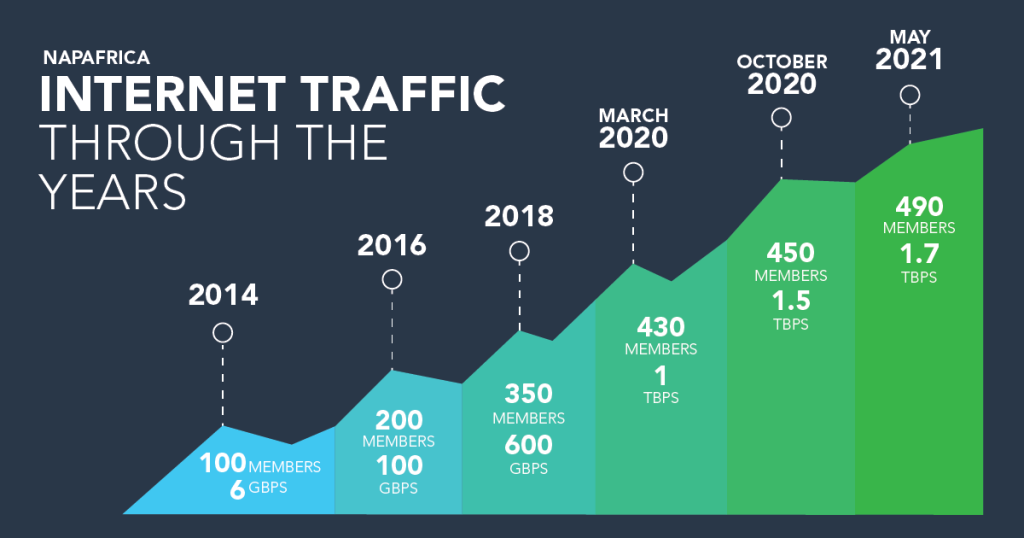Internet traffic in South Africa has steadily increased over the last eight years. NAPAfrica, the continent’s biggest internet exchange, is now closing in on a peering throughput of 2Tbps. NAPAfrica plays an essential role in reducing the cost of bandwidth connections while improving latency to key content.
NAPAfrica’s infrastructure is situated within Teraco’s three neutral colocation data centres in Cape, Town, Durban, and Johannesburg, where more than 500 companies now peer.
Launched in 2012, NAPAfrica’s early growth was due to increased interest in settlement-free peering among carriers and ISPs, with the most notable early adoption coming from MWeb.
“A few years later another growth spurt followed as content providers such as Google, Akamai, Cloudflare, Facebook, Netflix and many more arrived,” said Andrew Owens, chief technical resource for NAPAfrica. “The availability of good content and lower data costs for consumers meant that they, in turn, could afford to consume more content.”
The exchange then saw another large increase in peering with key cloud companies such as Microsoft and Amazon establishing local regions. “The availability of the global cloud infrastructure players locally has been a fantastic enabler for enterprise strategy,” Owens said.
The Covid-19 pandemic has created unusual global circumstances that affected Internet exchanges the world over, and in recent months, data traffic surged further with more people working and studying from home.
“It has been a period of significant growth across the globe and most notably in Africa,” Owens stated. “The elevated levels of traffic coursing through Internet exchange points clearly illustrate how IP traffic has grown across disparate geographies and cultures.”
According to Owens this growth clearly reflects a confluence of evolving data-intensive applications, the work-from-home reality, and increased video services demand. These have driven greater levels of traffic between service providers, enterprises, regions, and individual consumers.
NAPAfrica’s rapid growth over this period clearly illustrates the new reality. Peering throughput of 1.7Tbps was reached in May 2021, up from the 1.5Tbps in October 2020 and 1Tbps in March 2020.
Since launching, NAPAfrica’s growth has always been strongly underpinned by a steady increase in the number and the activity of its peering community. This continues to hold true as the traffic takes aim at the 2Tbps milestone.
An Internet eXchange Point (IXP) is a physical infrastructure through which Internet companies such as Internet Service Providers (ISPs), CDNs, enterprises, mobile networks, cloud and SaaS providers connect to exchange Internet traffic. By having a presence alongside an IXP, companies can shorten their path to the Internet by simply peering with other participating networks, thereby reducing latency, improving round-trip time, and potentially reducing costs.
